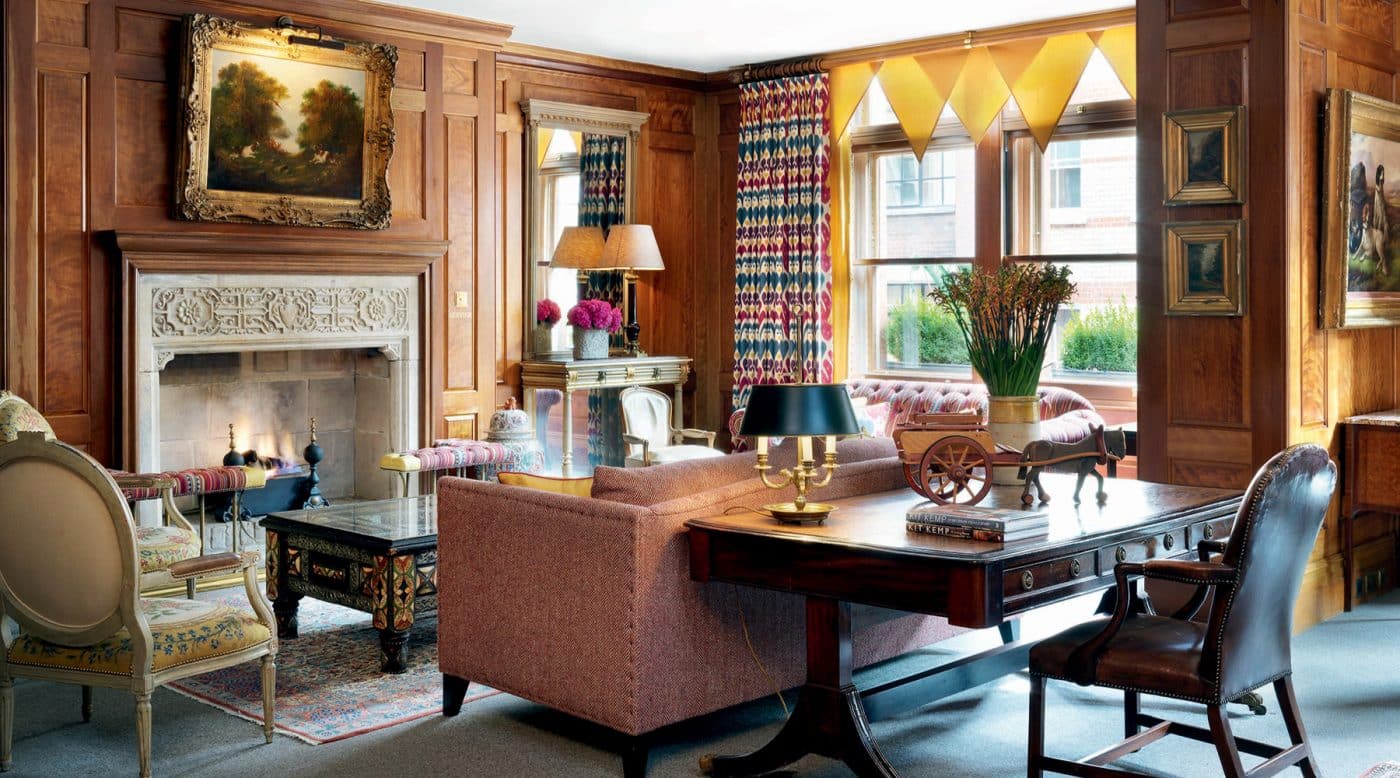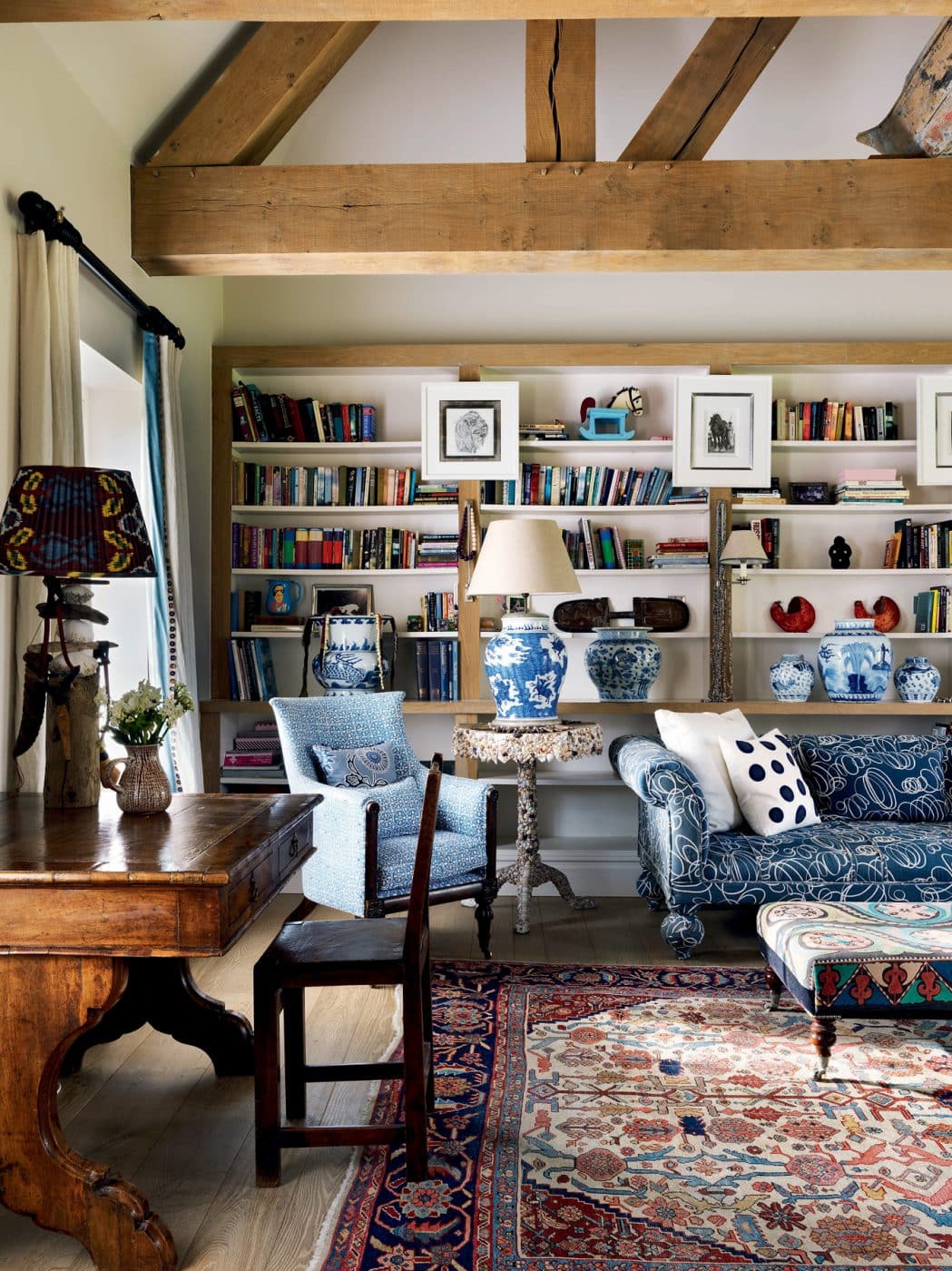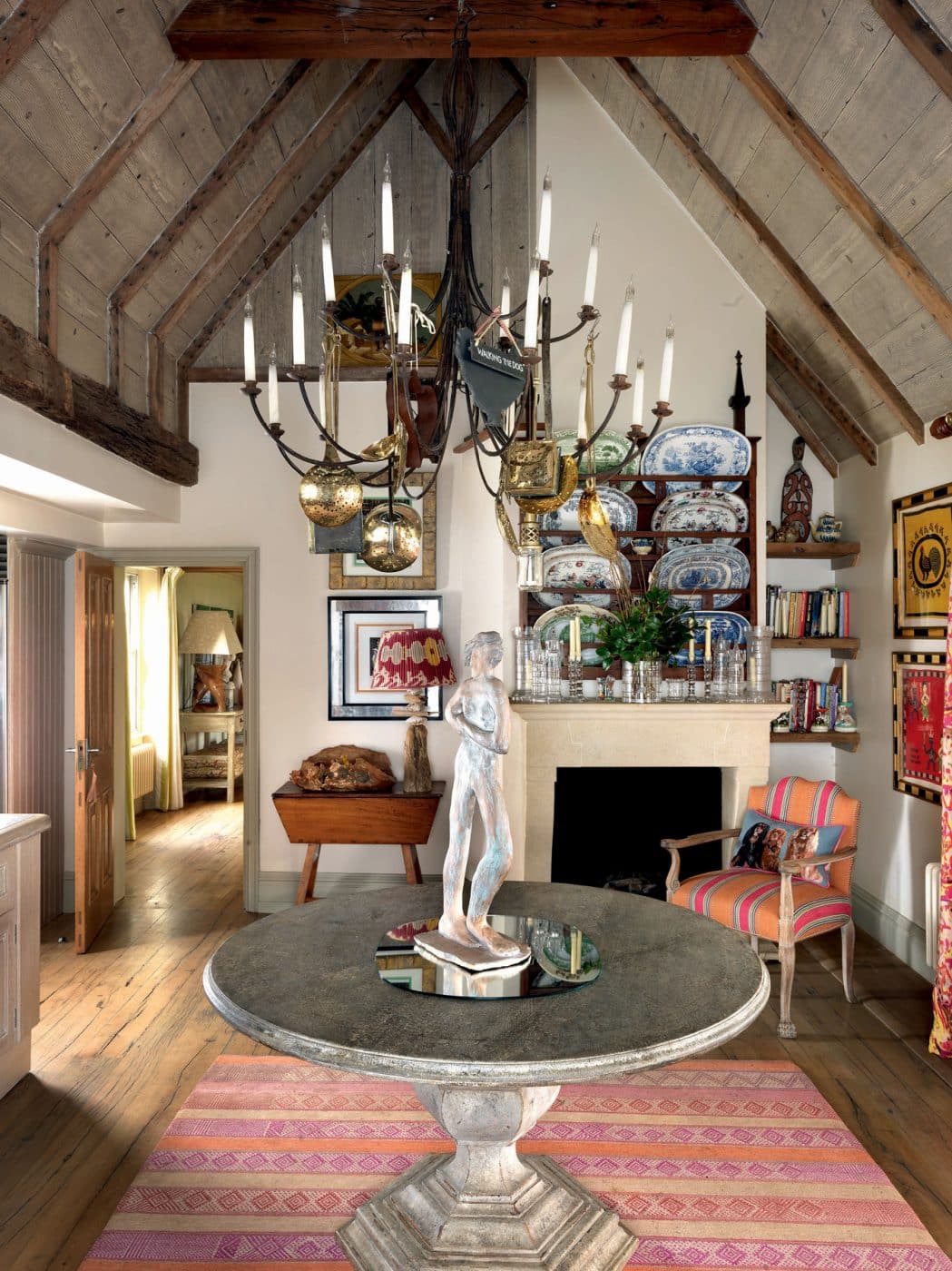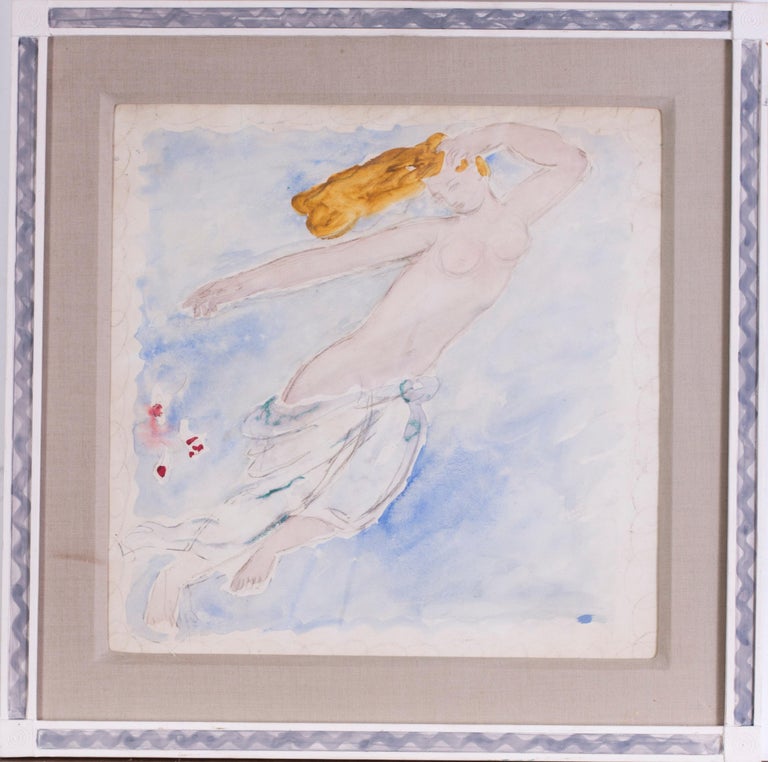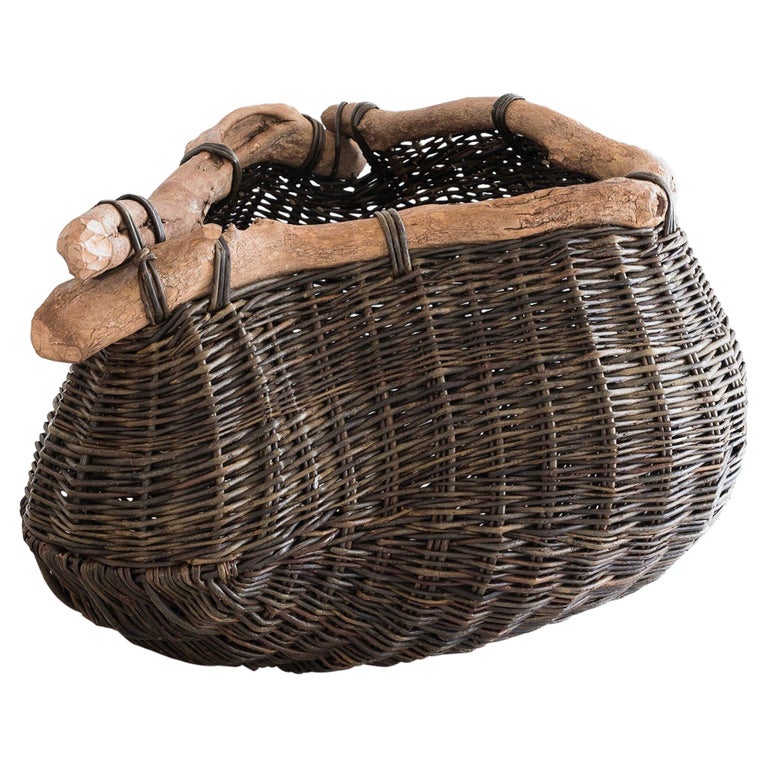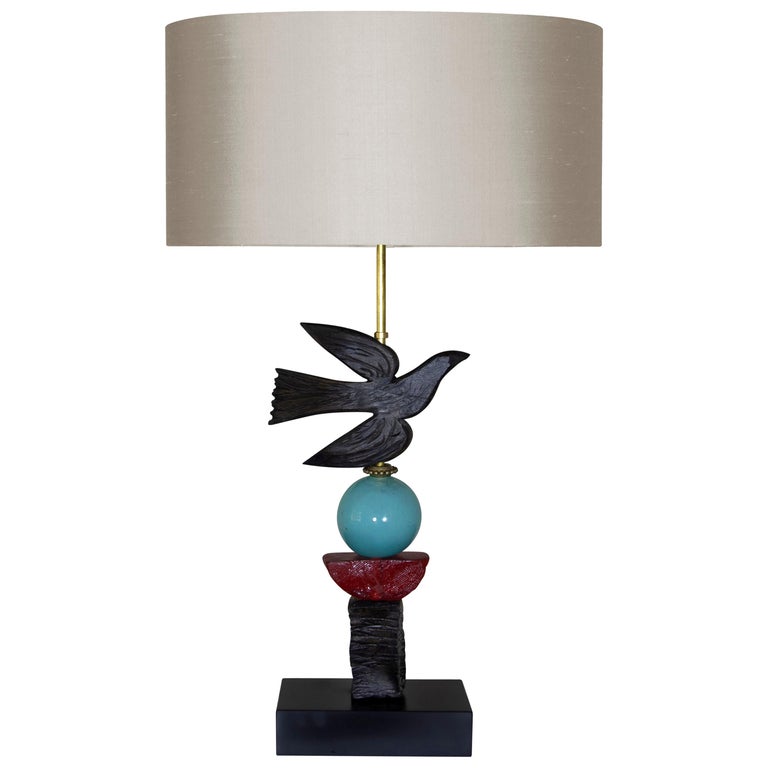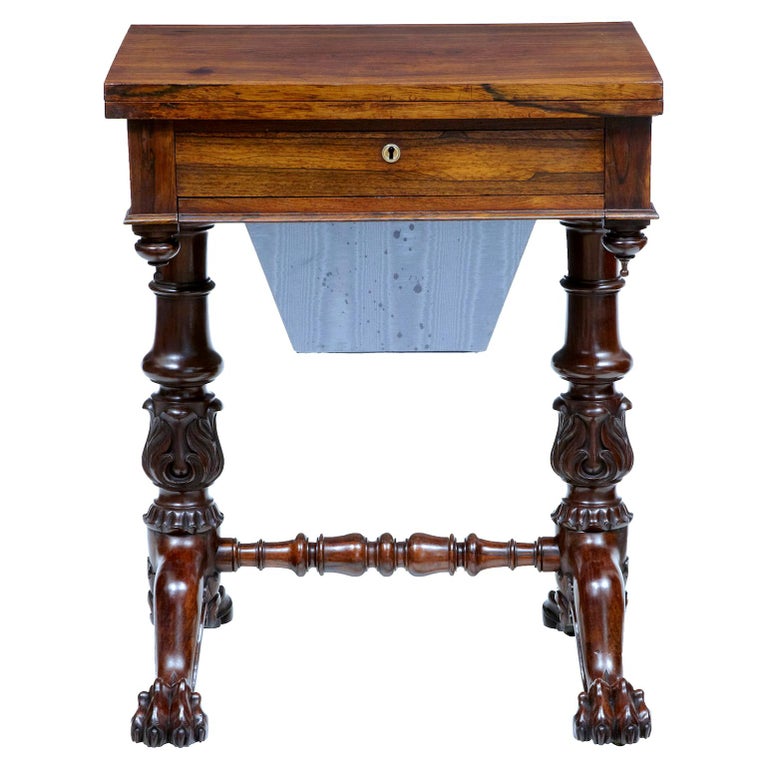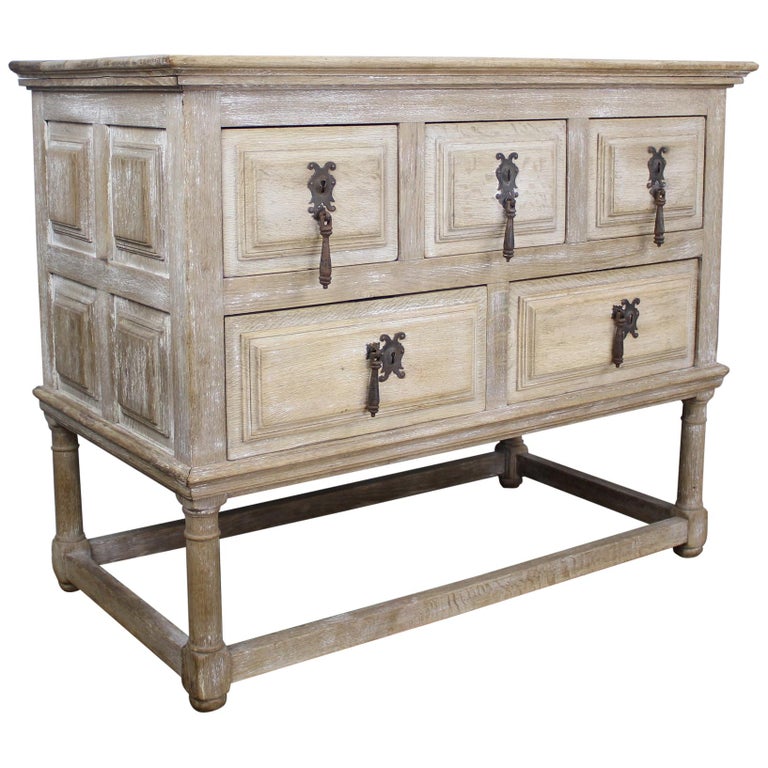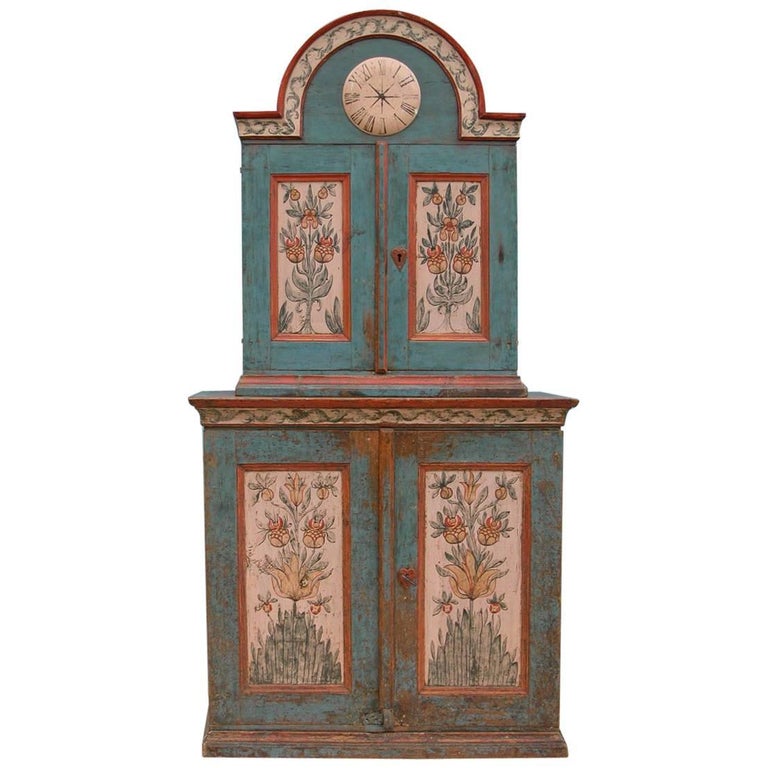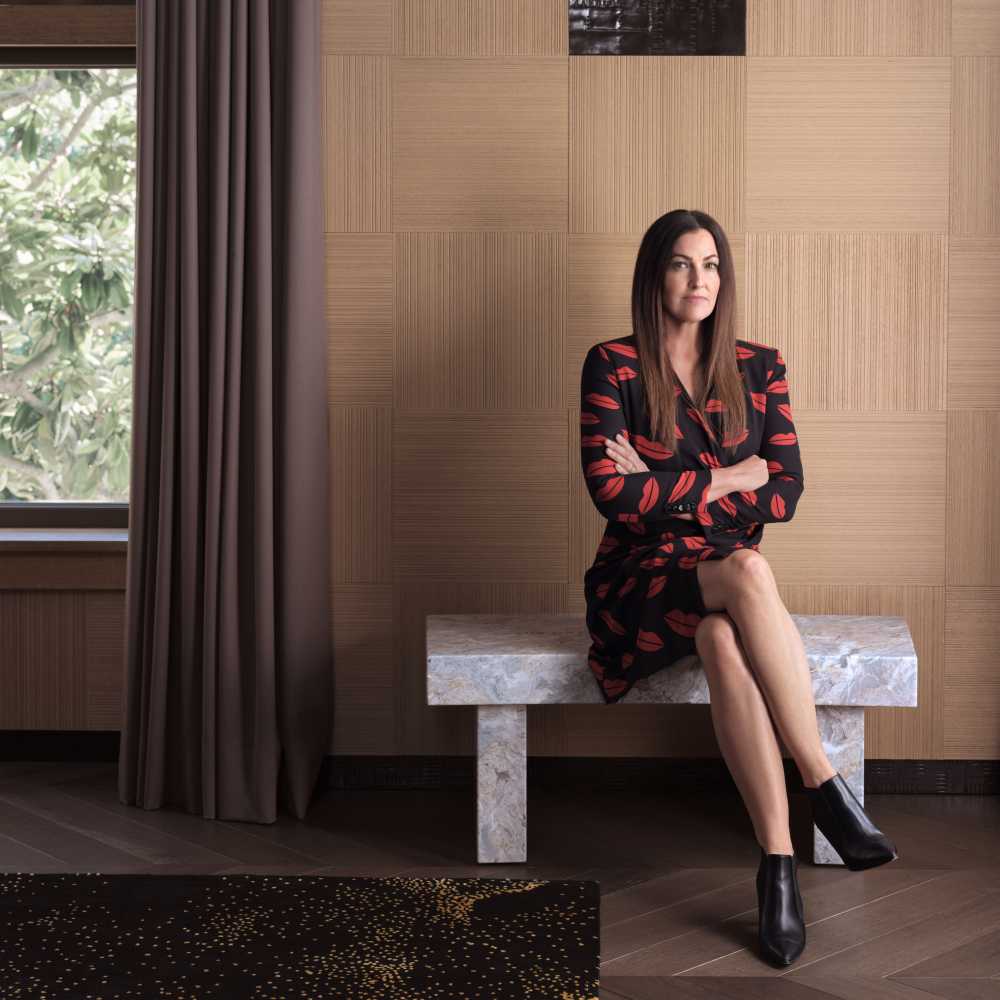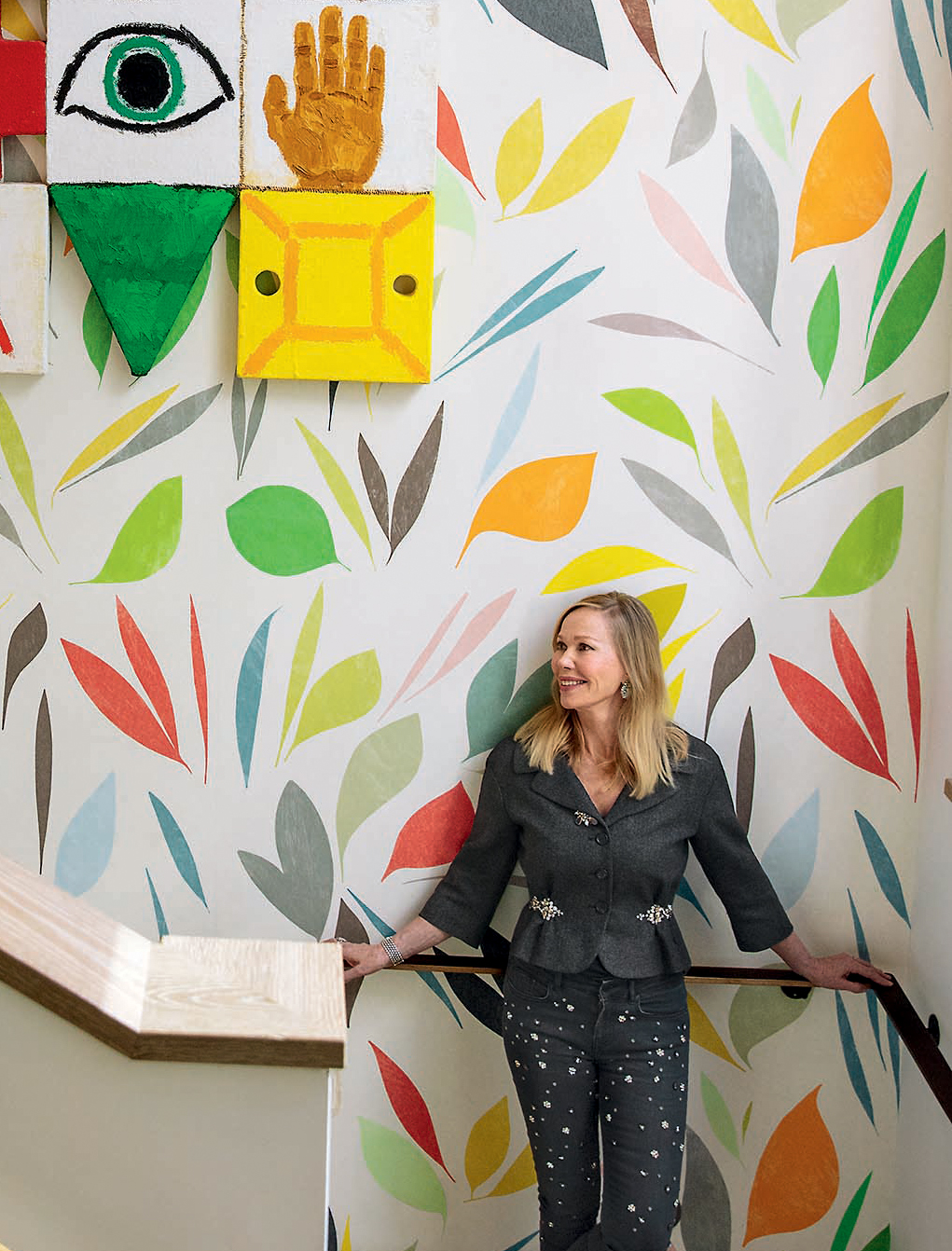
July 18, 2021There’s a bit of a Willy Wonka–style wondrousness about Kit Kemp. As an interior designer and the head of her own eponymous decorating firm, she playfully layers bold patterns, bright colors, whimsical artworks and handcrafted objects for an array of residential clients. And as a cofounder and creative director of Firmdale Hotels — comprising 10 beloved properties in London and New York — she spins entire immersive worlds.
Her hotels provide guests with a sense of respite and relaxation, to be sure, but they’re also fantastical escapes from the everyday. Just think of the field of glowing tulip-shaped pendant lights descending from the ceiling in the reading room of Manhattan’s Whitby Hotel or the forest filled with mythical creatures adorning walls in Charlotte Street Hotel, in the British capital, or that property’s restaurant, where a Bloomsbury-inspired mural depicts stylized Technicolor scenes of contemporary London life.
It stands to reason, then, that Kemp’s new book, Design Secrets (Hardie Grant), would have an entire section devoted to “The Rules of Magic,” revealing some of her tricks for adding a dose of wizardry to a room.
“Even in the most luxurious space,” she writes, “I like to introduce a little whimsy and intrigue to remind people that design doesn’t always have to be serious.” Among her ideas? Try glass cloches filled with colorful not-quite-natural versions of mushrooms and flowers, consider astrological motifs, and, of course, deploy plenty of Mythical Creatures — the name of one of Kemp’s textile collections.
These are just a few of the countless tips, tricks, rules, dos and don’ts presented here — across more than 250 brightly illustrated pages — as her signature secrets. The book’s purpose, Kemp explained in a recent conversation, is to remind readers that design “should be fun, and it should be exciting.” She wants to empower people to create spaces that feel right and true to them.
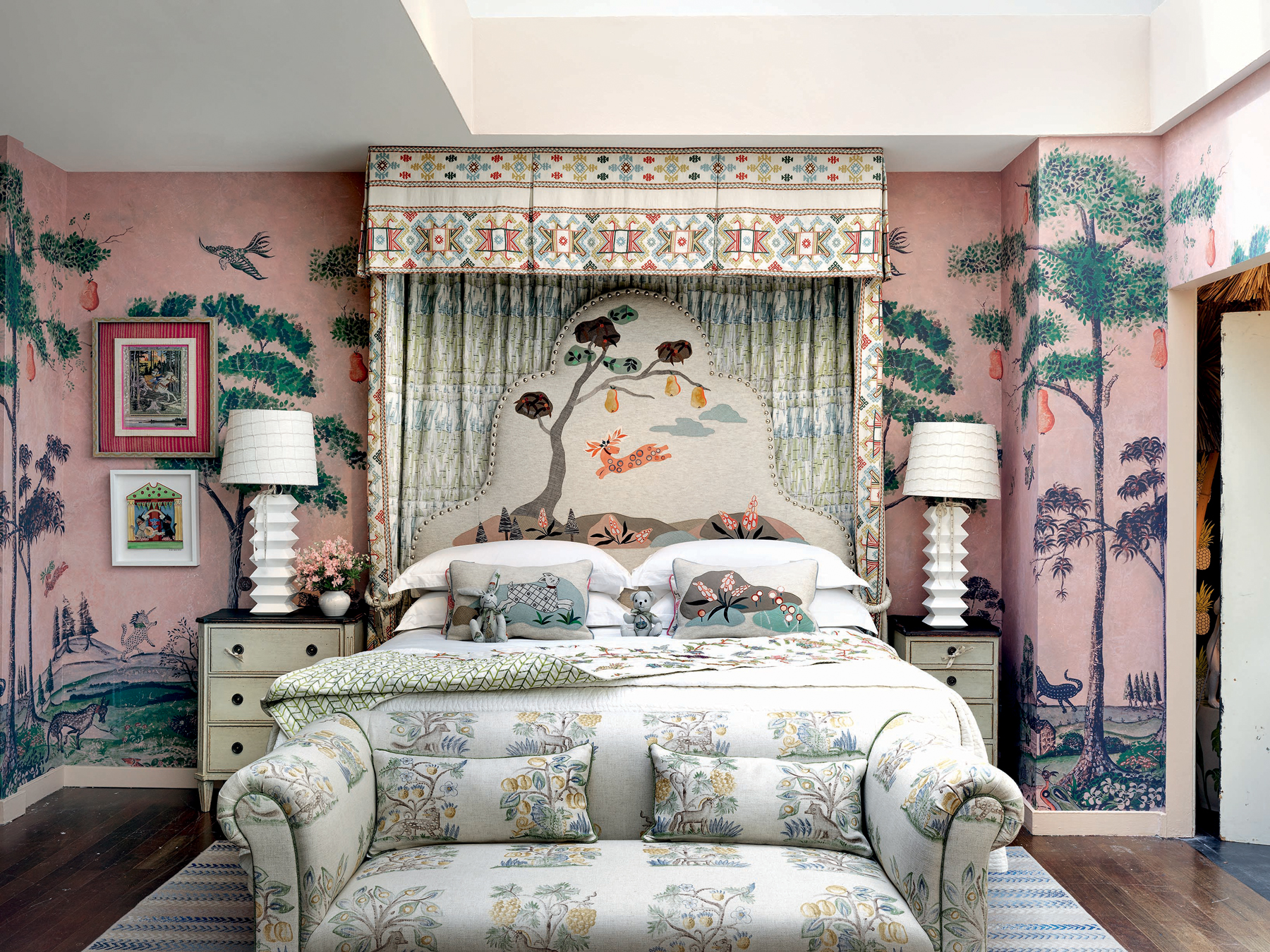
“Magic, in all its beguiling and uplifting expressions, has always been an inspiration,” Kemp writes in the book. Here, she used a variety of fabrics and wallpapers featuring fantastical creatures for a pop-up shop in New York. Folkloric landscapes like these create “a painterly, fairy-tale allure,” she writes.
She filled Design Secrets with such hands-on how-to elements as step-by-step guides for creating Kit Kemp–style carpets, headboards, picture frames and more. It even comes with a coloring book containing black-and-white illustrations of a few Kemp rooms, to help readers figure out preferred palettes. (Crayons or markers sold separately.)
Below, Kemp divulges much more about her design ethos and the book’s raison d’être, as well as her passions for collecting objects and antiques and for creating magic — often from the most mundane items.
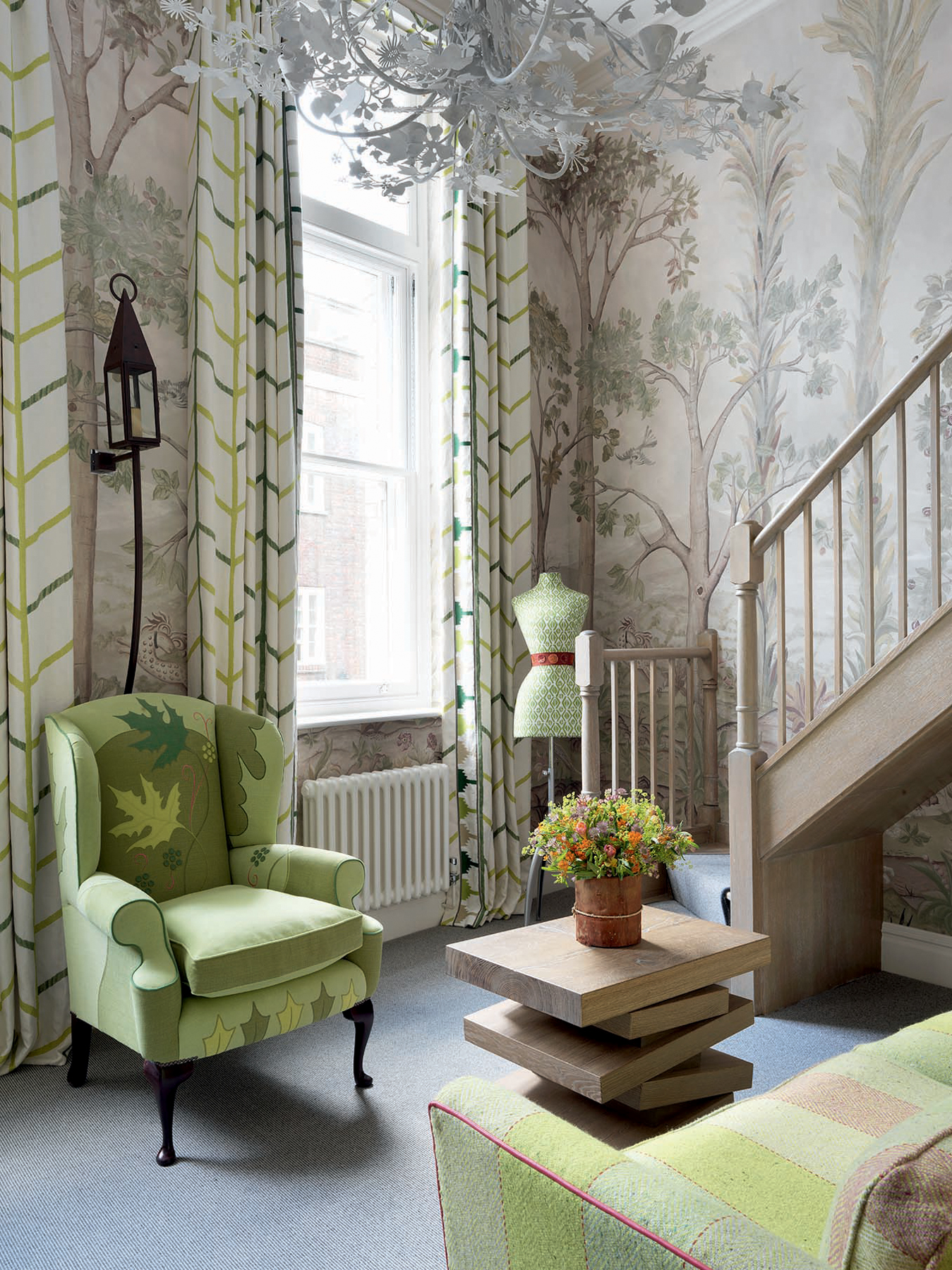
1. Why did you want to make a book like this?
So often when people are designing their homes, they find the result underwhelming. It’s because we’re told to conform in so many ways to what we should like — leather, black-and-white photographs, taupe — and in the end, we just don’t feel comfortable in that space.
This book provides a different way of looking at things. It’s a little nudge to help people say to themselves, “I can add character to a space, I can do something that says a little bit more about me.”
Our living spaces act as mirrors to our thoughts and feelings. We’re always evolving and changing. Design Secrets gives new ways to reflect that. I wanted to do a book you could put beside your bed and dip into and out of, looking at it in winter and finding something you like, then looking at it again in summer and seeing something else.
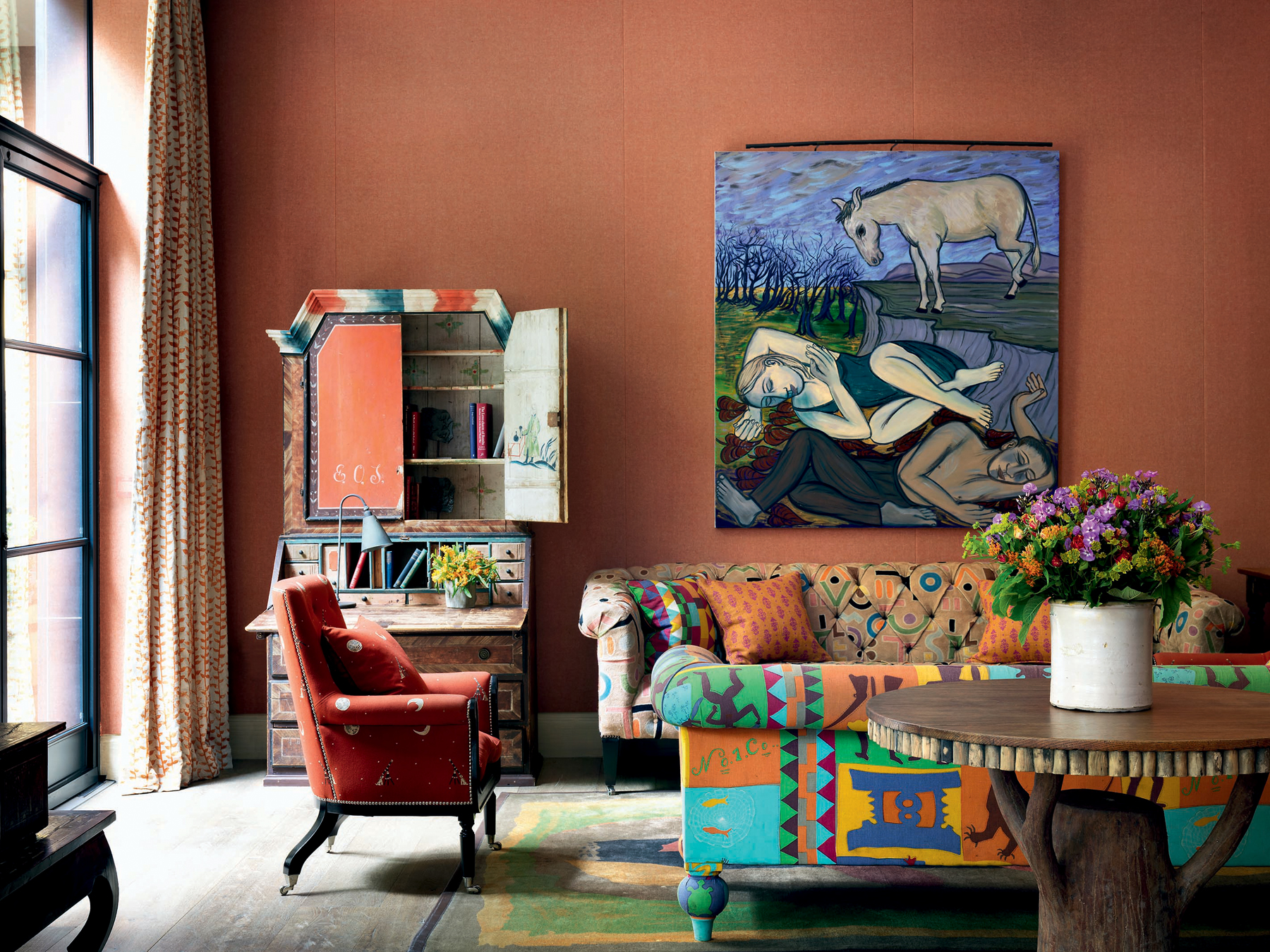
Never one to shy away from a colorful palette and surprising combinations of pattern, Kemp juxtaposed sofas upholstered in embroidered crewelwork and a vibrant patchwork-printed cotton In the drawing room of London’s Ham Yard Hotel. To this pairing, she added a painted antique Swedish armoire, a Breon O’Casey rug, an Eileen Cooper painting and a burnt-wood and slate coffee table by Tom Stogdon.
2. What would you say are the recurring themes of the book, overarching ideas that the various secrets connect to?
For me, it’s always the five Cs: character, color, comfort, craft and curation. Character, because adding something, a focal point, gives people something to talk about, to ask you about — “Oh, you’re interested in horses.” Color, because, really, that’s what makes you happy, it’s the spice of life. Comfort, because, at the end of day, you have to feel very comfortable in that room and never want to leave, with the perfect cozy chair and good lighting. Craft, because I love things that are artisanal, whether a ceramic pot or a lamp base or lamp shade. A machine can make the same thing over and over, but each object made by a craftsperson will always be different because it’s made by hand, and that made-by-hand feeling is really love. And curation, because rooms are all about curating at the beginning and then again at the end. The devil’s in the details.
3. You’re known for making artistic installations out of collections of everyday objects. What advice do you have for someone who wants to do the same?
Now, in our almost post-pandemic world, it’s a good time to reevaluate what you find valuable. Maybe you have a drawer full of keys because you moved houses so much. Why not make a fantastic artwork out of all those shapes? It’s the story of your life on a wall. It doesn’t have to be in the center of your living room, but in an in-between space, where it becomes a find. Those little nooks are a good place to have fun.
Or take bowling shoes — I always thought they were quite fun. You probably wouldn’t wear them every day, but the designs are gorgeous. I took great joy in making a collection of them for a wall of the bowling alley at the Ham Yard Hotel, in London.
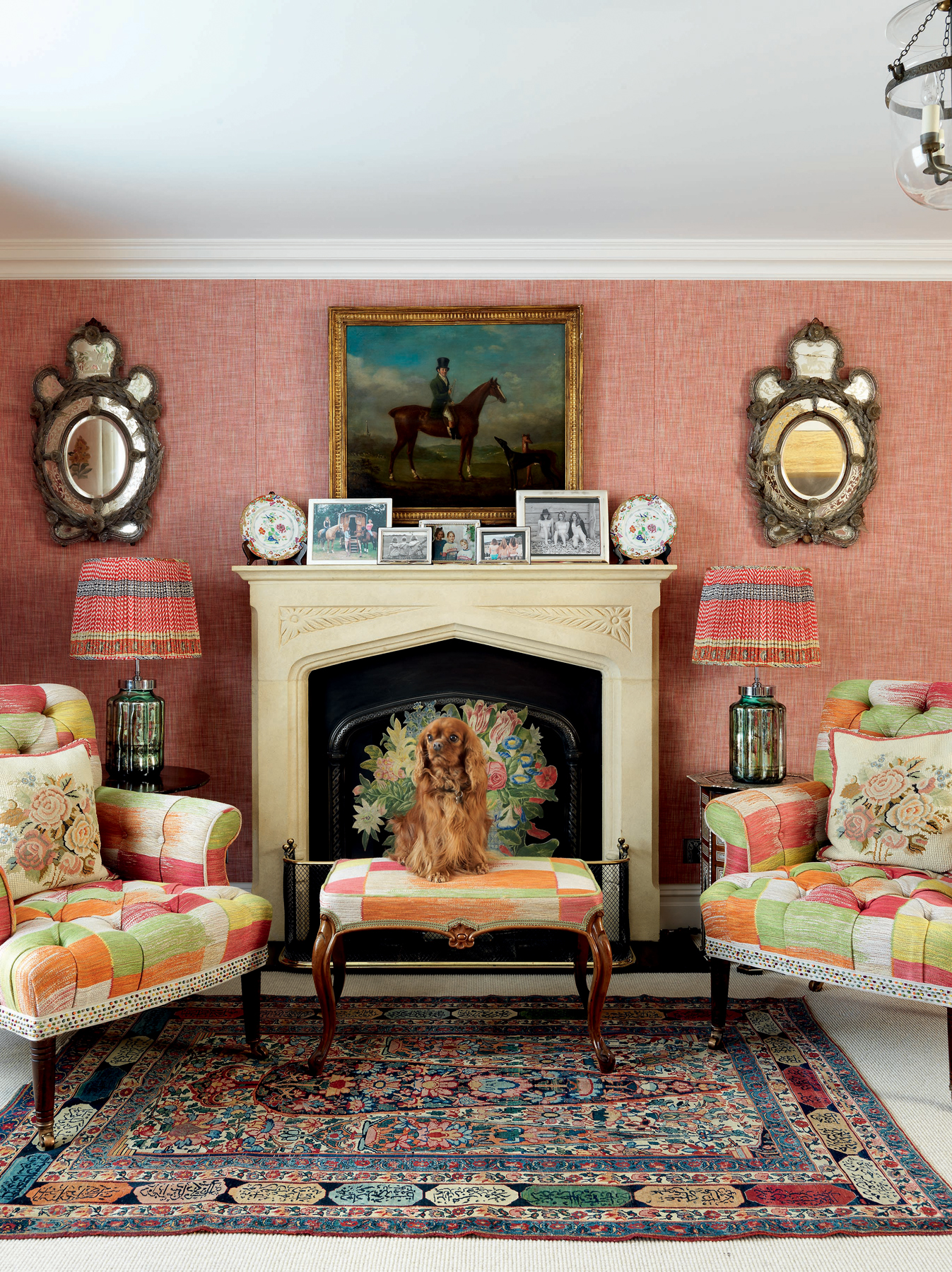
“A fireplace can be ablaze with a floral cluster rather than a typical roaring fire,” Kemp writes. “If your fireplace isn’t used often, or is predominantly decorative, then popping in fun pieces such as this painted bouquet brings life.”
4. How do you incorporate antiques and vintage finds into your work?
I sometimes don’t think about them as antiques, per se, but as part of the texture and color and overall palette that make an interior feel layered. Because if it’s all so very contemporary, it’s almost forgettable, and if it’s all antique, it can become a pastiche of the past. It’s that wonderful curiosity created by the mix that’s appealing to me.
There’s something about the wood of an antique piece that you just want to touch. The beauty and the craft tell a story of the centuries. I love William IV pieces, for example. They’re very strong, the mirrors especially.
You can get a fine reproduction table, but nothing beats an antique in a corner, with a mirror above. If you have a strange nook in a room, you can put it to work by putting an antique desk there, or vintage shelves with a collection of old books. It gives you a place to work but also makes a space that says something and adds interest.
Adding an antique fireplace is a great way to start winning with a room that otherwise has no redeeming architectural features or even a view. The fireplace itself can have a lot to say.
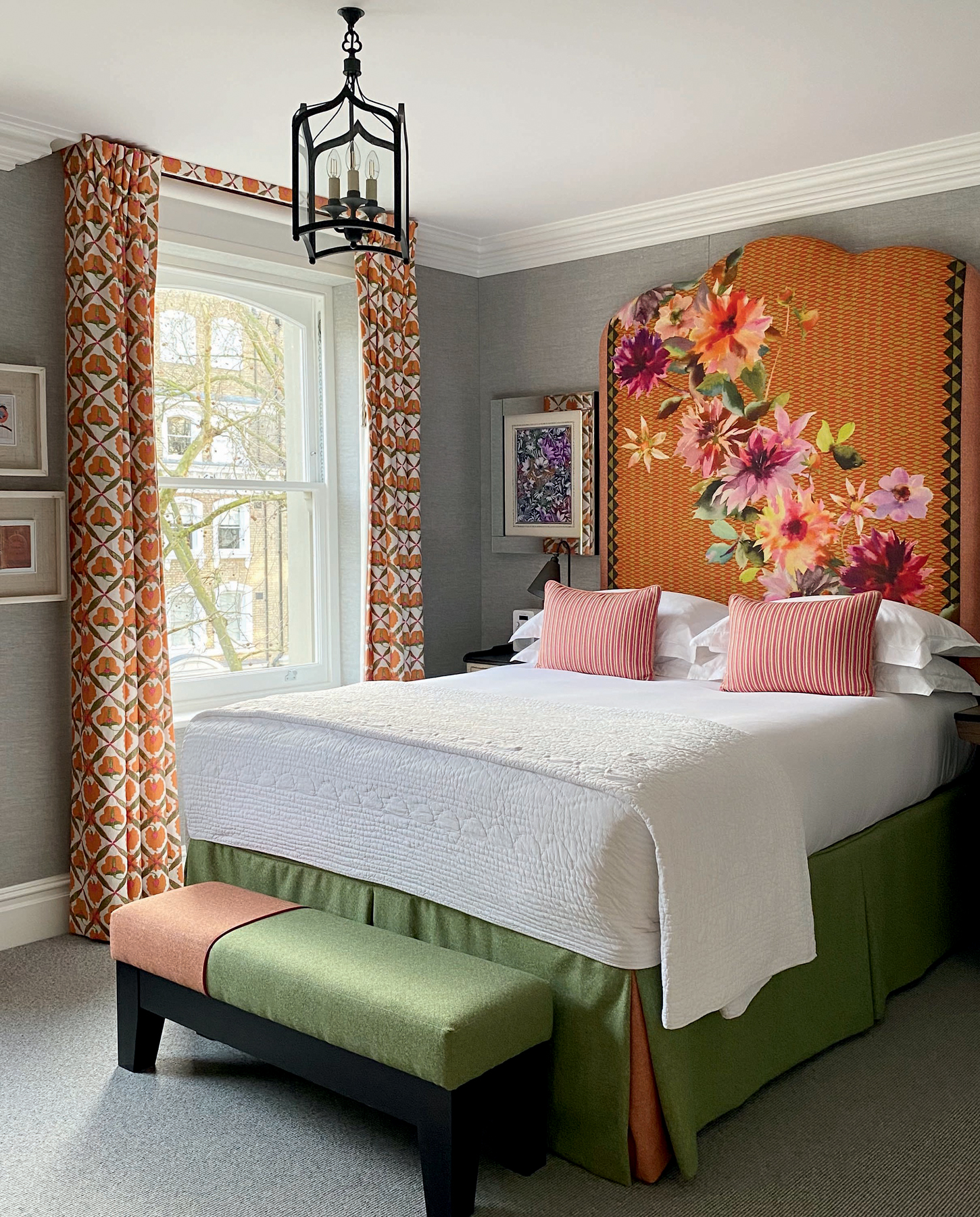
5. Do you have a different approach to designing a scheme for a hotel versus a private home?
I don’t really. Very often, with the hotels more than with residences, we’re in a pretty uncompromising city landscape, so I want it to be light and fresh, and reviving. When you enter into one of our hotels, I want you to feel like you’re entering into a magical world. There’s an element of fantasy there — who you might meet, what might happen.
Ultimately, whatever and wherever the space, my goal is to satisfy the senses. That’s what making memorable rooms is all about.
